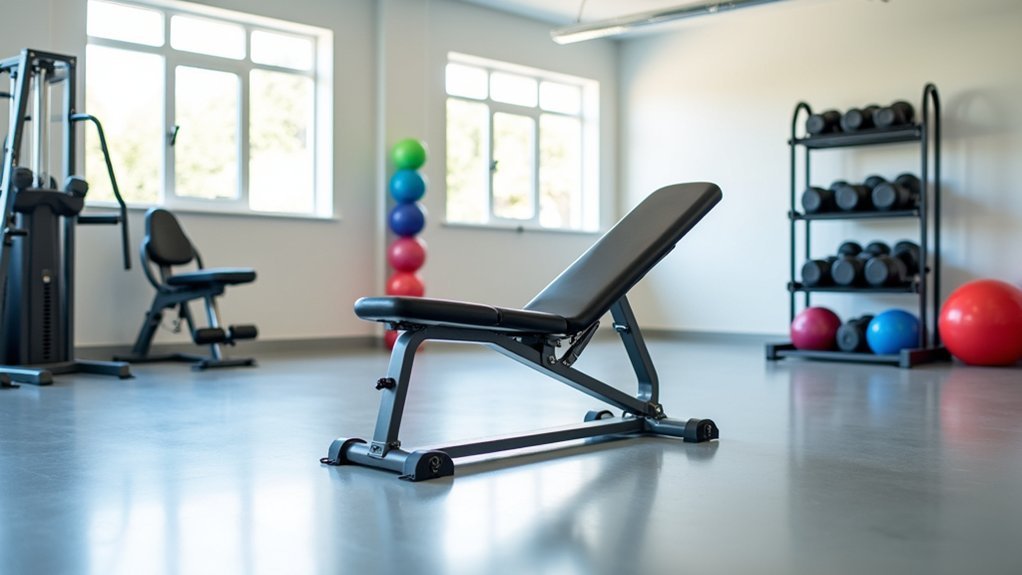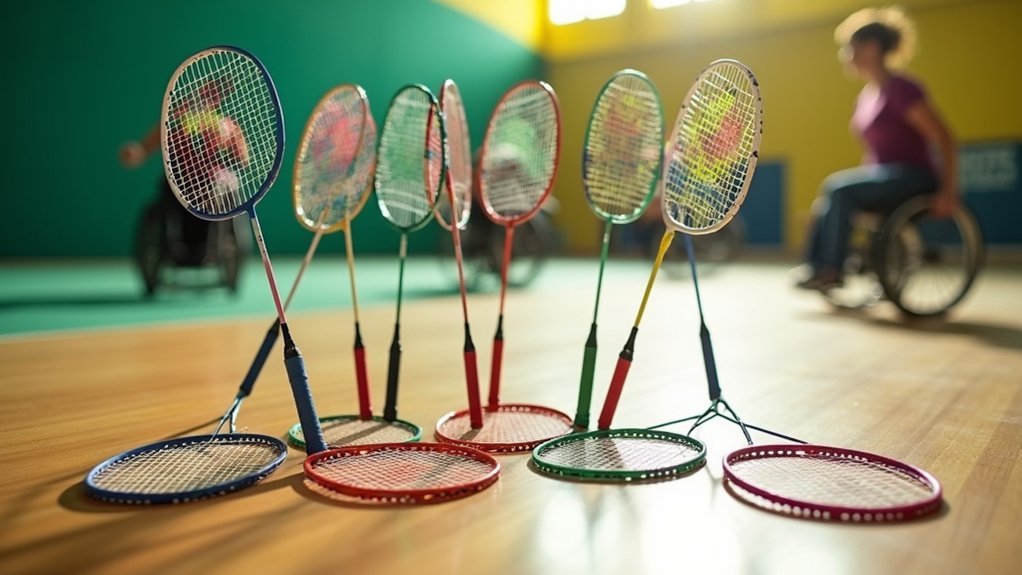Rock climbing offers five therapeutic approaches for all body types: adaptive techniques with specialized equipment, vertical movement that releases mood-boosting chemicals, mental wellness challenges that build resilience, inclusive equipment modifications like custom harnesses and prosthetics, and tailored recovery practices. You’ll benefit from improved strength, enhanced problem-solving skills, and increased self-confidence regardless of your physical limitations. Discover how climbing’s physical and mental benefits can transform your everyday life beyond the wall.
Adaptive Climbing Techniques for Diverse Bodies and Abilities

While traditional climbing often seems tailored to specific body types, adaptive climbing techniques have revolutionized the sport by making it accessible to everyone.
You’ll find specialized equipment and modified approaches that accommodate your unique needs, whether you’re using assistive devices like prosthetics or wheelchairs to enhance mobility on the wall.
Organizations like Paradox Sports offer training programs focused on body awareness and strength building tailored to diverse bodies.
These programs help you develop techniques that work specifically for your abilities. Beyond physical fitness benefits, adaptive climbing greatly boosts your mental health and self-efficacy.
The therapeutic benefits extend far beyond the climbing gym, as you’ll gain confidence that transfers to everyday challenges.
Therapeutic Benefits of Vertical Movement in Nature
Rock climbing in natural settings offers profound therapeutic benefits that complement the adaptive techniques discussed above.
When you ascend a rock face, your body releases serotonin while reducing stress hormones, creating a natural mental health boost that indoor training can’t fully replicate.
The physical demands of climbing improve not just your strength but your executive functioning—enhancing decision-making skills through real-time problem-solving.
This vertical movement becomes a form of therapy itself, with research supporting its effectiveness when paired with traditional psychotherapeutic approaches.
You’ll experience mindfulness naturally as climbing performance requires complete presence.
Each successful route builds self-efficacy and resilience that transfer to everyday challenges.
The combination of physical training, injury prevention through proper technique, and connection with nature delivers therapeutic effects unmatched by conventional exercise.
Mental Wellness Through Climbing Challenges

As you push your limits on challenging routes, your brain responds by balancing critical neurochemicals linked to mood regulation. Your body releases serotonin while reducing stress hormones, creating a natural pathway to mental wellness that extends beyond the climbing gym.
Research confirms that climbing technique challenges do more than build physical strength—they’re powerful tools against anxiety and depression. Unlike traditional Physical Therapy approaches, climbing engages your core strength while addressing muscle imbalances through purposeful movement.
Mental health facilities now incorporate climbing into extensive treatment plans, finding that patients develop remarkable self-efficacy when confronting vertical problems.
You’ll discover that each successful climb builds psychological resilience that transfers to everyday challenges. This mind-body connection creates lasting therapeutic benefits that standard exercise routines simply can’t match.
Equipment Modifications for Inclusive Rock Climbing
Since the climbing community has embraced inclusivity, adaptive equipment innovations have transformed accessibility for climbers of all abilities.
You’ll find specialized gear designed to accommodate various body types and physical conditions, empowering everyone to experience the thrill of scaling walls.
Key adaptive climbing equipment includes:
- Modified harnesses that provide trunk stability for climbers with mobility challenges
- Assistive devices like climbing prosthetics and specialized crutches for those with limb differences
- Adjustable footholds and handholds that offer customizable support based on individual needs
- Visual aids and tactile indicators to help visually impaired climbers navigate routes confidently
- Training aids that promote body awareness and proper technique development
These modifications, combined with tailored training programs focusing on adaptive techniques, guarantee that inclusive rock climbing becomes a reality for everyone regardless of physical limitations.
Recovery and Self-Care Practices for Climbers With Physical Limitations

Recovery and self-care represent the hidden foundation of successful climbing for those with physical limitations. Your body demands attentive maintenance through targeted approaches.
Begin with proper warm-up routines focusing on fingers, shoulders, and hips before each climb. Afterward, incorporate gentle mobility exercises like yoga or Tai Chi to enhance flexibility and control.
Consider consulting a physical therapist to develop personalized recovery protocols addressing your specific needs. Self-myofascial release techniques using foam rollers can effectively reduce tension in overworked muscle groups.
For maintaining fitness without aggravating limitations, engage in low-impact cross-training activities such as swimming or cycling.
Remember that consistent recovery practices aren’t optional extras—they’re essential investments that will extend your climbing longevity and improve your overall performance on the wall.
Frequently Asked Questions
Does Rock Climbing Work the Whole Body?
Yes, rock climbing works your whole body. You’ll engage your arms, shoulders, back, and core while pulling yourself up, and you’ll use your legs and glutes to push and balance on footholds.
Is Rock Climbing Good for ADHD?
Yes, rock climbing is excellent for ADHD. You’ll benefit from the dopamine release, improved focus, and structured environment. It helps you channel energy productively while developing mindfulness and self-regulation skills you can use daily.
How Do You Train Your Body for Rock Climbing?
To train for rock climbing, you’ll need to develop flexibility through stretching and yoga, build strength in your lats and grip muscles, practice movement techniques, use hangboards for finger strength, and maintain consistent warm-up routines.
Do Rock Climbers Have Nice Bodies?
Yes, rock climbers often develop nice bodies. You’ll notice they typically have well-defined upper bodies, strong cores, and lean muscle due to the sport’s demands on strength, flexibility, and endurance.
In Summary
Rock climbing therapy isn’t just for the stereotypical athletic body—it’s for you, whatever your physical reality. You’ll find that adapting techniques, embracing nature’s vertical challenges, and using modified equipment opens doors to profound physical and mental healing. Don’t hesitate to start your climbing journey; with proper self-care and recovery practices, you’ll discover strength you never knew existed in both body and mind.





Leave a Reply